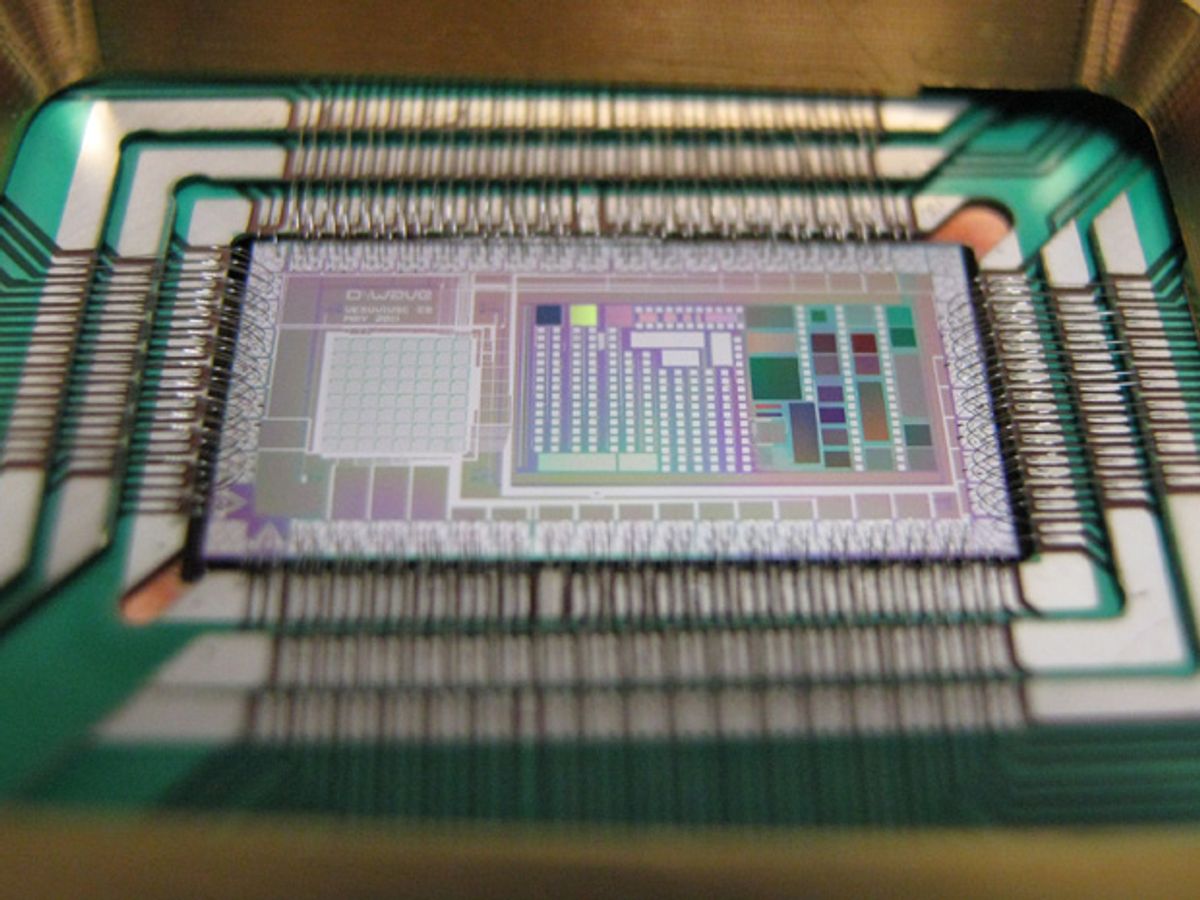The strongest scientific evidence for D-Wave's claim to have built commercial quantum computers just got weaker. A new paper finds that classical computing can explain the performance patterns of D-Wave's machines just as well as quantum computing can—a result that undermines crucial support for D-Wave's claim from a previous study.
Quantum computing offers the possibility of doing many calculations in parallel by using quantum bits that can exist as both a 1 and 0 at the same time, as opposed to classical computing bits that exist as only a 1 or 0. Such mind-bending quantum physics could allow quantum computers to outperform classical computers in tackling challenging problems that would take today's hardware practically forever to solve. But D-Wave's quantum computing claims remain controversial in the scientific community even as the Canadian company has attracted high-profile clients such as Lockheed Martin and Google. (See IEEE Spectrum's overview of the evidence for and against D-Wave's machines from the December 2013 issue.)
A growing number of independent researchers have examined the Canadian company's claim to have built quantum computers at scales well beyond anything seen in academic labs. Rather than build machines based on the traditional logic-gate model of computing, D-Wave built 512-qubit machines that supposedly perform quantum annealing—a method for tackling optimization problems. The best optimization solutions represent the lowest "valley" of a problem landscape resembling peaks and valleys.
One key to making quantum computing practical involves harnessing the quantum physics phenomenon of entanglement—separate qubits sharing the same quantum state—so that quantum computers can scale up effectively to tackle more complex challenges. A previous paper used simulations to suggest D-Wave's machine performance patterns did show evidence of large-scale quantum entanglement across more than one hundred qubits. But the new paper published on the arXiv preprint server came up with a classical computing model that could explain the same patterns formerly attributed to quantum annealing, according to the Physics arXiv Blog.
The new paper drew a critical response from Geordie Rose, founder and chief technology officer of D-Wave, in which he suggested the new paper's classical model did not fit other experiments involving the performance of D-Wave machines. But, Scott Aaronson, a theoretical computer scientist at MIT and D-Wave critic, said the classical model's applicability in this particular case still undermines the biggest piece of evidence for D-Wave machines' having large-scale entanglement. He spoke recently with Matthias Troyer, a computational physicist at ETH Zurich and a lead author of the previous paper (Boixo et al.) about how the new research (Shin et al.) had changed Troyer's mind.
"Most tellingly, Matthias Troyer—one of the lead authors of the Boixo et al. paper, and someone I trust as possibly the most evenhanded authority in this entire business—tells me that the Shin et al. paper caused him to change his views: he didn’t know if the correlation patterns could be reproduced in any reasonable model without entanglement, and now he knows that it’s possible."
When IEEE Spectrum spoke with Aaronson last year, he was willing to admit that D-Wave's machines may do quantum entanglement despite his overall skepticism toward D-Wave's endeavors. Even now, he noted that evidence still exists for D-Wave's machines performing small-scale entanglement. But he added that the evidence from the past year shows that D-Wave still has not demonstrated a speedup over classical computing. That is, D-Wave hasn't proved its machines can outperform classical computers on increasingly challenging problems.
The lack of evidence for such a speedup has not stopped Google from enthusiastically testing out its recently purchased D-Wave machine, but it does mean D-Wave still has a ways to go before it can show that quantum computing has truly arrived. In a previous IEEE Spectrum interview, Troyer pointed out how independent researchers have only gained access to D-Wave machines in the past few years—a change that has allowed them to begin testing the machines' scientific merits. The results of such scientific investigations so far have not supported most of D-Wave's claims.
Jeremy Hsu has been working as a science and technology journalist in New York City since 2008. He has written on subjects as diverse as supercomputing and wearable electronics for IEEE Spectrum. When he’s not trying to wrap his head around the latest quantum computing news for Spectrum, he also contributes to a variety of publications such as Scientific American, Discover, Popular Science, and others. He is a graduate of New York University’s Science, Health & Environmental Reporting Program.



